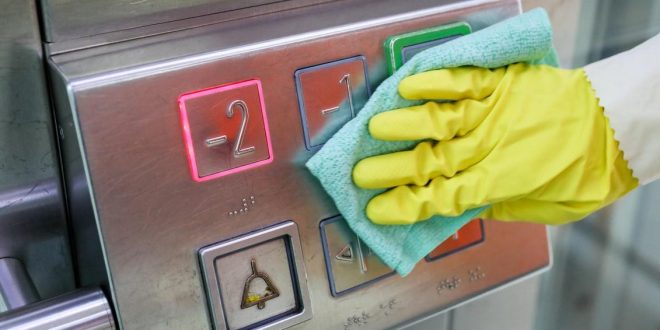COVID-19 can spread through households via the virus on hands and surfaces, according to the results of a study by Imperial College London.
The study results are the first to show that the presence of SARS-CoV-2 on individuals’ hands and frequently touched household surfaces is linked to the risk of infection.
“There’s no doubt that if you have COVID-19 you’re emitting the virus into the air as micro-aerosols, as well as large droplets that land on your hands and the surfaces around you. What hasn’t been shown, until now, is that the presence of the virus on [individuals’] hands or household surfaces predicts transmission to contacts,” Ajit Lalvani, director of the National Institute of Health and Care Research (NIHR) Health Protection Research Unit (HPRU) in Respiratory Infection, said in a statement.
“Our real-life study in London households provides the first empirical evidence to show that the presence of SARS-CoV-2 on [individuals’] hands and surfaces contributes significantly to spread of COVID-19. Since we didn’t systematically sample household air, we cannot rule out airborne transmission occurring in parallel,” Lalvani said.
The results support the use of interventions at home for individuals with COVID-19, including frequent handwashing, physical distancing, regular surface disinfection, and using a mask.
The study included 279 households in London between August 1, 2020, and March 31, 2021, and was conducted at the height of the pandemic during the alpha and pre-alpha waves, according to investigators.
Very few individuals had been previously infected or vaccinated since the study was conducted early in the pandemic, according to investigators.
Furthermore, they could assess risk factors and vectors for transmission as if this were a natural experiment.
Participants in the study were regularly tested for SARS-CoV-2 by PCR on nose and throat, upper-respiratory-tract swabs. They also received swabs from the contacts’ and primary cases’ hands and the most frequently touched surfaces, including fridge door handles, kettle handles, and kitchen taps.
Investigators then looked for any correlations between microbiological detection of COVID-19 on hands and surfaces with transmission to household contacts.
“In houses in which we found the virus on surfaces and the hands of participants, infection among contacts, and thus transmission, was significantly higher,” Nieves Derqui, from Imperial College London’s NIHR HPRU in Respiratory Infections, said in the statement.
After adjusting for other potential factors, investigators found that if the virus was detected on the primary cases’ hands, then the contacts were 1.7 times more likely to get infected than those in households where the primary cases’ hands did not have the virus.
Additionally, if the virus was on the primary cases’ hands, then those in the household were 3 times more likely to have a positive hand swab and twice as likely to become infected with COVID-19.
If the virus was present on frequently touched surfaces, the contacts were 3.8 times more likely to have a detectable virus on their hands and 1.7 times more likely to be infected.
Among those who were initially uninfected but became infected during the study, 6 had positive or household surface swabs before becoming infected.
Furthermore, investigators confirmed that the primary cases and their contacts had the same strain of COVID-19 to ensure the infections came from the households.
The study results were published in The Lancet Microbe.
 Alghadeer TV Alghadeer TV
Alghadeer TV Alghadeer TV

